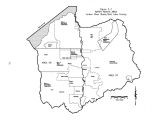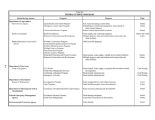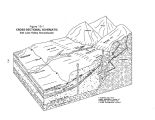| OCR Text |
Show demonstrated a growing interest to include these issues as part of their planning process. The following are examples of wildlife and environmental planning performed at the local level. The Central Valley Water Reclamation District contracted in 1988 with a consultant to conduct a four- year fishery study of the Jordan River in Salt Lake County. The primary objective was to monitor fish populations at several sampling stations established on the Jordan River, and determine if fish ( especially game fish) abundance was related to differences in physical habitat or water quality. Four stations on the Jordan River were sampled: above Mill Creek ( approximately 3300 South), below Mill Creek, 1700 South and 1000 North. Stations on the Surplus and Goggin canals were also sampled. From 1988 to 1991, 24 species of fish belonging to nine families were captured in the Jordan River. Carp, Utah sucker and fathead minnow were the most abundant species. Walleye, White Bass and Green Sunfish were the most common game fish. The study showed that fish abundance in the Jordan River is limited more by physical habitat than by water quality. Overall catch rates were highest where riprap covered the banks. Game fish appeared to prefer man- made structures and riprap cover types. The study concluded that until physical habitat is improved, assessing the effects of water quality on fish populations in the river will be difficult. The preference of the game fish for manmade structures and rip- rapped areas is quite likely an indication of the natural channels degraded condition. The Jordan River has been straightened and channelized for much of its length. Much of the Jordan River channelization took place in the 1950s as a part of that era's efforts to stabilize the river. Since the 1950s, however, much has been learned about the dynamics of rivers and streams. Today's preferred approach is to work more closely with the river's natural sinuosity and meander patterns. A 1992 Jordan River Stability Study conducted for Salt Lake County listed among the major findings and recommendations: " The channel stabilization work performed in the 1950s between 2100 South and 14600 South contributed to many of the river's existing stability problems. The channel slope increase induced by this channel straightening resulted in increased flow velocities and caused higher sediment transport rates. These factors acted to de- stabilize the channel bed and cause accelerated bank and bed erosion." The Jordan River Stability Study recommends a river management plan that stresses non- structural management techniques, such as zoning restrictions and control of land use within the defined river meander corridor. Structural elements of the plan are intended to be used to enhance the natural on- going fluvial processes and re- establish a more natural channel pattern as well as protect existing development from erosion. Along with improving bank stability, erosion control and water quality, this approach should have a positive impact on fishery and wildlife habitat. 14.3.2 State The Division of Wildlife Resources has general responsibility for the protection and management of fish and wildlife. Prior to 1973, wildlife management in Utah was almost entirely directed toward game species. The Division of Wildlife Resources began a non- game wildlife program in 1973. Early focus was on raising funds for research and management. The State Legislature funded a non- game biologist position in 1975, and Utah became the first western state and only the 17th state in the nation with a non- game specialist. The present urban wildlife program has grown out of these non- game activities. The Division of Wildlife Resources has the lead role in determining potential impacts ( positive and negative) to wildlife resources from water development projects. The role of the Division of Wildlife Resources in water planning is to: 1. Assess water development plans and specifically: a. Identify potential benefits to wildlife and their habitats, b. Identify potential adverse impacts to wildlife and their habitats, c. Recommend a course of action to mitigate project impacts to wildlife and their habitat for the public interest, and d. Recommend termination if mitigation is infeasible or not possible. 2. Provide factual information to decision makers regarding consequences of unmitigated and mitigated impacts to wildlife resources. 14- 3 |

















































































































































































